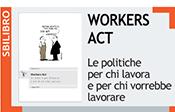Ultimi link in questa sezione
Krugman e la storia del pensiero economico
Krugman decided to try his hand at history of macroeconomic thought in one of his last posts. That’s great, since history of thought is essential to understand how we got here. It’s also bad, since Krugman is still very much a mainstream author, and misses the point of Keynes’ contributions, and the limitations of neoclassical (or more properly, marginalist) approach. He suggests correctly that the New Classical (NC)/Real Business Cycle (RBC) project was a failure, but both the reasons for that and his interpretation of the Keynesian project are misguided.
The first proposition in Krugman’s reassessment of the recent history of macroeconomics, is that Keynesian models were ad hoc, and assumed wage and price rigidity. The whole of chapter 19 of the General Theory (GT) is about the effects of price and wage flexibility, and how it does not produce full employment. It was with Franco Modigliani’s PhD dissertation, done at the New School for Social Research under Jacob Marschak, that the sticky wage version of Keynesian theory that would dominate the neoclassical synthesis was concocted.
Keynes is actually quite explicit about the negative effects of wage reductions. He says (GT, ch.19-link above):
“A reduction of money-wages will somewhat reduce prices. It will, therefore, involve some redistribution of real income (a) from wage-earners to other factors entering into marginal prime cost whose remuneration has not been reduced, and (b) from entrepreneurs to rentiers to whom a certain income fixed in terms of money has been guaranteed.
What will be the effect of this redistribution on the propensity to consume for the community as a whole? The transfer from wage-earners to other factors is likely to diminish the propensity to consume. The effect of the transfer from entrepreneurs to rentiers is more open to doubt. But if rentiers represent on the whole the richer section of the community and those whose standard of life is least flexible, then the effect of this also will be unfavourable. What the net result will be on a balance of considerations, we can only guess. Probably it is more likely to be adverse than favourable.”
Hence, the fix-wage version of Keynes’ thought is the result of misconception, that suggests that if markets worked well, without imperfections, they would move to full employment. Unemployment is a disequilibrium, by definition a short run situation resulting from a rigidity.
The whole point of the neoclassical synthesis was to suggest that one could continue to teach that markets are efficient, and that supply determined the price and quantity of equilibrium in all markets including those of “factors of production” (i.e. the labor and capital markets), and as a result unemployment could only result from rigidities in the labor market. Nothing revolutionary there, and in that case, as Keynes foresaw, people would think he was quite wrong or said nothing new.
By the way Krugman does not believe that rigid wages are behind our current lack of full employment (in his view it is the downward rigidity of the rate of interest; Keynes also did not believe in the liquidity trap as the cause of depressions), which makes it more difficult to understand why he defines Keynesians (Old and New) as pragmatic rigid price and wage modelers. You cannot blame then Laurence Kotlikoff for his confusion (here and Krugman’s reply and here; Jamie Galbraith, also implicated, gives a better answer since he never said that Keynes is about wage rigidity; scroll down for Jamie’s and Kotlikoff’s back and forth).
Krugman’s second point is that Friedman and Phelps in the 1960s were trying to provide microfoundations to wage and price rigidity. Actually, the microfoundations agenda had more to do with the theoretical development of theories for consumption (Modigliani, Friedman), investment (Eisner, Tobin) and money demand (Baumol, Tobin) behavior. The Phillips Curve (PC) debate and the Friedman-Phelps notion of a natural rate of unemployment is associated to the idea that there is a supply side constraint to the economy, and stimulating demand would ultimately have only effects on prices and not on quantities. The economy naturally moves to full employment, unless there are restrictions, and what is needed is to eliminate the restrictions not stimulate demand.
In other words, the monetarist approach of Friedman accepts the neoclassical synthesis notion that it is the rigidities that cause unemployment. It just proposes a different policy solution. By pointing out the existence of a natural rate of unemployment analogous to Wicksell’s natural rate of interest (which Keynes’ criticizes in the GT) Friedman was just emphasizing that if one believes in the neoclassical theory of value and there are no restrictions the system moves to full employment. In fact, Friedman’s (1970) theoretical framework, an ISLM cum PC and natural rate model, is remarkably close to the neoclassical synthesis models.
In that sense, the Lucas Revolution and the subsequent move, after Kydland and Prescott’s work, of most New Classicals , including Lucas, to the Real Business Cycles camp is a not a break with Friedman, and the New Keynesians (NK) that accept everything (including the natural rate) are part of the same tradition. The difference is that some emphasize the long run neoclassical principles and others the short run rigidities that demand policy action.
The fundamental problem of the neoclassical/marginalist approach, and the importance of Keynes analysis, can ONLY be properly understood in light of the 1960s capital debates (for a good reference go here). The point, for the purposes of our discussion here, is that if there is unemployment and real wages fall, neoclassical theory tells you that according to the principle of substitution, more labor is demanded (the cheap thing that is in excess supply) and less machines (capital) are used, since they are relatively more expensive. However, since labor (which is cheaper) is used in the machine sector too their price should fall too, and is not generally true that there is a tendency for the full utilization of “factors of production” according to their relative scarcities. Further, even if the substitution effects go in the right direction, and more labor is used, the income effect of lower real wages tends to be large and have a negative effect on demand (put simply, workers cannot buy stuff), which implies that less of all “factors of production” are used. In other words, there is no natural tendency to full utilization of labor or capital, and both the natural rate of unemployment and its evil twin the natural rate of interest do NOT exist.
So it is peculiar that Krugman thinks that “NK economics [is] useful, if only as a way to check my logic, although it’s not really clear if it’s any better than old-fashioned Keynesianism.” What logic? New Keynesian models assume a natural rate, and that the economy (without rigidities) moves to full employment! The problem with the NC/RBC/Lucas’ type of theory is not that it failed to predict the 1980s recession or that they think that most crises are caused by real shocks (although both propositions are obviously wrong), as Krugman seems to believe, but that they do maintain the fiction of an efficient market that clears (in their case too fast for Krugman’s taste) and that produces a natural rate. If he wants to move in the right direction Krugman should follow Galbraith and announce that it is time to ditch the natural rate hypothesis.
PS: That means that progress in economics is not linear, and that one can and should learn from old and forgotten traditions (classical political economy did not assume full utilization of resources).










